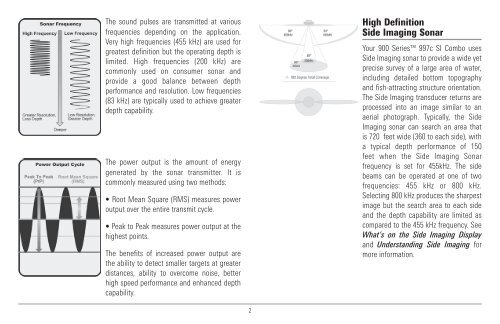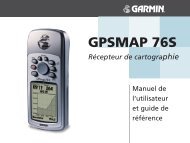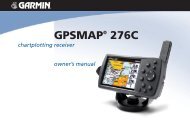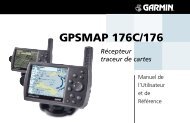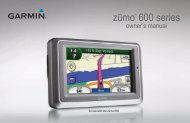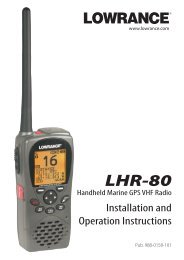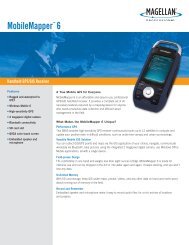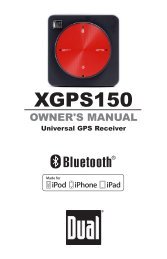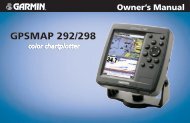Humminbird - Fish Finders and GPS
Humminbird - Fish Finders and GPS
Humminbird - Fish Finders and GPS
Create successful ePaper yourself
Turn your PDF publications into a flip-book with our unique Google optimized e-Paper software.
The sound pulses are transmitted at various<br />
frequencies depending on the application.<br />
Very high frequencies (455 kHz) are used for<br />
greatest definition but the operating depth is<br />
limited. High frequencies (200 kHz) are<br />
commonly used on consumer sonar <strong>and</strong><br />
provide a good balance between depth<br />
performance <strong>and</strong> resolution. Low frequencies<br />
(83 kHz) are typically used to achieve greater<br />
depth capability.<br />
The power output is the amount of energy<br />
generated by the sonar transmitter. It is<br />
commonly measured using two methods:<br />
• Root Mean Square (RMS) measures power<br />
output over the entire transmit cycle.<br />
• Peak to Peak measures power output at the<br />
highest points.<br />
The benefits of increased power output are<br />
the ability to detect smaller targets at greater<br />
distances, ability to overcome noise, better<br />
high speed performance <strong>and</strong> enhanced depth<br />
capability.<br />
High Definition<br />
Side Imaging Sonar<br />
Your 900 Series 997c SI Combo uses<br />
Side Imaging sonar to provide a wide yet<br />
precise survey of a large area of water,<br />
including detailed bottom topography<br />
<strong>and</strong> fish-attracting structure orientation.<br />
The Side Imaging transducer returns are<br />
processed into an image similar to an<br />
aerial photograph. Typically, the Side<br />
Imaging sonar can search an area that<br />
is 720 feet wide (360 to each side), with<br />
a typical depth performance of 150<br />
feet when the Side Imaging Sonar<br />
frequency is set for 455kHz. The side<br />
beams can be operated at one of two<br />
frequencies: 455 kHz or 800 kHz.<br />
Selecting 800 kHz produces the sharpest<br />
image but the search area to each side<br />
<strong>and</strong> the depth capability are limited as<br />
compared to the 455 kHz frequency. See<br />
What’s on the Side Imaging Display<br />
<strong>and</strong> Underst<strong>and</strong>ing Side Imaging for<br />
more information.<br />
2


